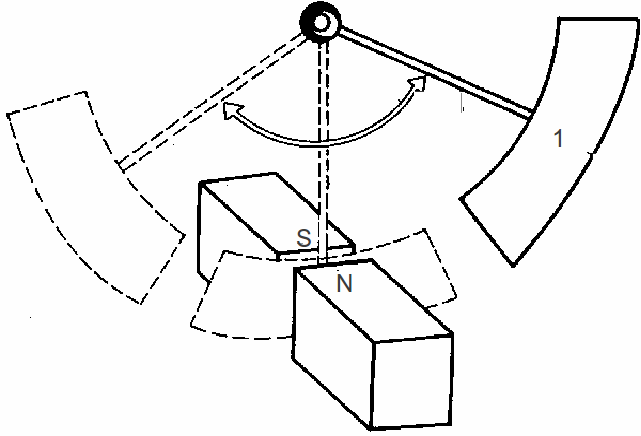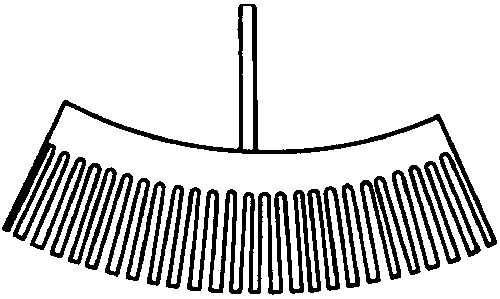The electromagnetic brake is an application of Lenz's Law: When a condutor moves in a magnetic field, the direction of the induced voltage is such as to oppose the change causing it. This is most clearly illustrated when a metal conducting sheet swings between the poles of the magnet.

The oscillations rapidly decrease in amplitude because the induced EMF in the conductor opposes increasing EMF as the conductor moves between the plates and tries to maintain the EMF as the conductor moves out from between the plates. The net effect is the production of eddy currents, which dissipate the energy of the conductor. The currents are illustrated below for the conductor in position 1.

Eddy currents can be reduced, and the oscillations be made to last longer by putting teet in the conductor, as show below.

More generally, this principle can be in braking devices. Large currents are passed through the conductor, and electromagnets used instead of permanent magnets to enhance the braking effect.
